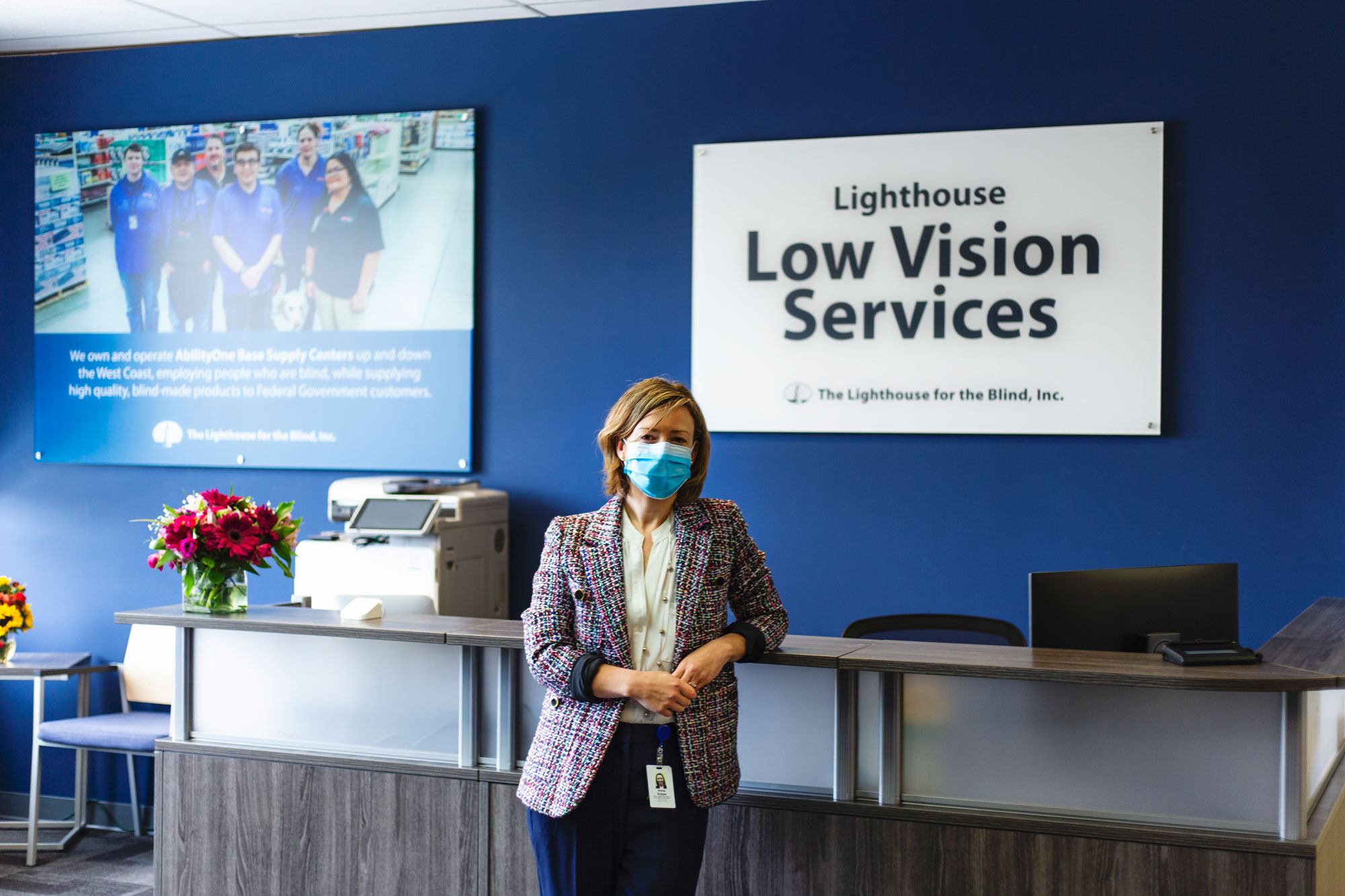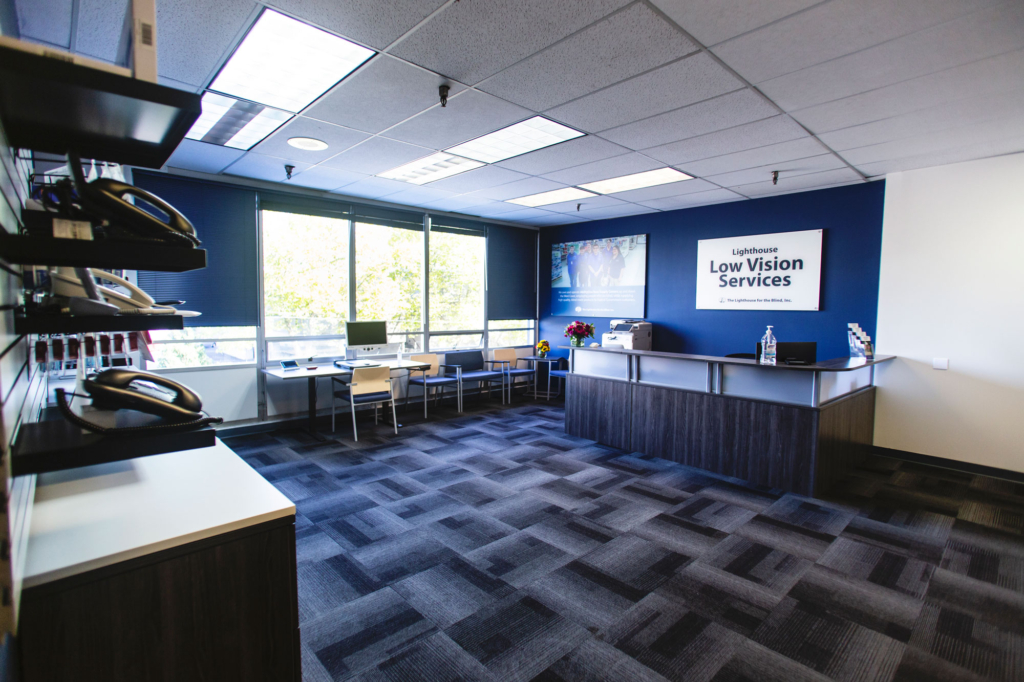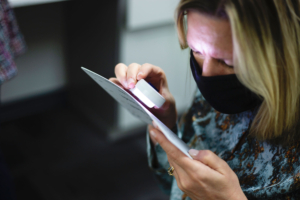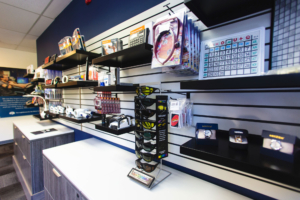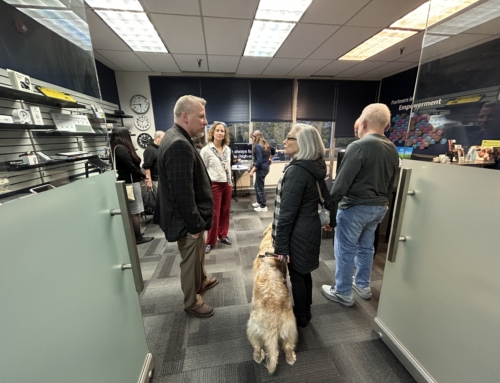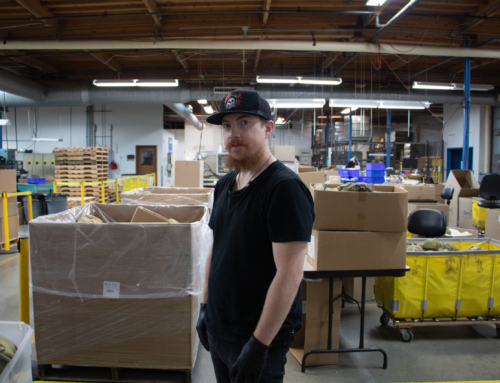The Lighthouse Low Vision Clinic is open for in-person appointments on Tuesday-Thursday. Services are by appointment only. The Low Vision Clinic will continue to offer telehealth services other days of the week. Learn more about what a telehealth appointment is like at the Low Vision Clinic.
Cindy Watson was the first patient served in-person at our Low Vision Clinic. Cindy notes the importance of these services in the King County community, “Our low vision services are critical in supporting the community. Access to these critical services enables people who are adjusting to vision loss maintain their independence and live fulfilling lives.”
Here’s what to expect at your in-person appointment:
- Wide image of the entry way to the Low Vision clinic. Shelving can be seen on the left with equipment, a desk and waiting room chairs can be seen on the right.
Navigate to The Lighthouse for the Blind, Inc. and enter through the main doors. Check in with the receptionist on the first floor. They will direct you to the elevator which will take you to the second floor. There you will find our Low Vision Clinic and be greeted by someone from our Low Vision Services team.
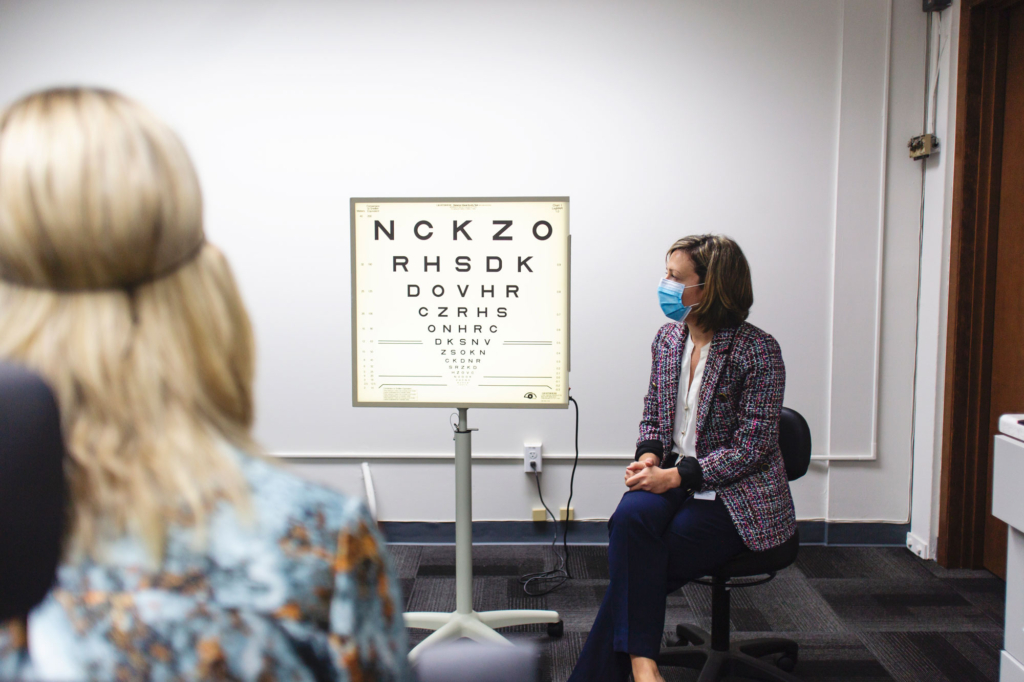
Dr. Shagas sits in a chair beside a large eye chart. She is wearing a mask.
What to Expect During the Exam
During your exam, Dr. Anna Shagas will walk you through a functional vision assessment. Some of the evaluations will include special testing to map out central or peripheral vision, depending on the eye condition at hand.

Dr. Shagas is pointing to the largest line on an eye chart. Facing her, Cindy Watson sits in an exam chair, also wearing a face mask.
Appointment Length
Appointments are expected to last up to 2-3 hours. For the duration of that time, both the patient and the Lighthouse staff are expected to be masked at all times.
- Cindy holds a paper in front of her face, lit up by a task light.
- Close up of a hand holding a CCTV. The screen on the CCTV shows the word “children” in much larger font than the paper behind it.
- Cindy holds a handheld magnifier with a light close to a piece of paper in front of her face.
During your appointment you will have the opportunity to test out different tools that may help with daily living skills and leading an independent life.
These include things such as reading with a task light, using a CCTV, and using a handheld magnifier.

Cindy sits in an exam chair while Dr. Shagas adjusts the phoropter that is resting against Cindy’s face”.
Dr. Shagas may prescribe glasses or update your existing prescription.
Visit the Low Vision Store
- A wide shot of a wall of shelves. Upon the shelves watches, sunglasses, magnifiers and more can be seen.
- A shelf has various sizes of handheld magnifiers arranged on it.
- A shelf with various large print clocks.
End the appointment by checking out our Low Vision Store. Here we stock everything from high-powered reading glasses to talking watches and clocks to a variety of adaptive aids for the kitchen and other in-home areas.
This is also where you can purchase some of the tools that you were able to test during your appointment.
After the functional vision assessment with an optometrist, an occupational therapist will review your rehabilitation goals, teach you how to use the prescribed devices and apply them to daily living skills.
Want More Information?
For more information about services, call (206) 436-2154 to speak to a representative or visit our Low Vision Services page to fill out a request or referral forms.
You may also be interested in these recent blog posts:
16 Tips for Communicating With People Who Have Vision Loss
99-Year-Old Uses Zoom to Meet With Doctor
6 free and low-cost ways to make your workplace accessible for someone who is blind or low vision

